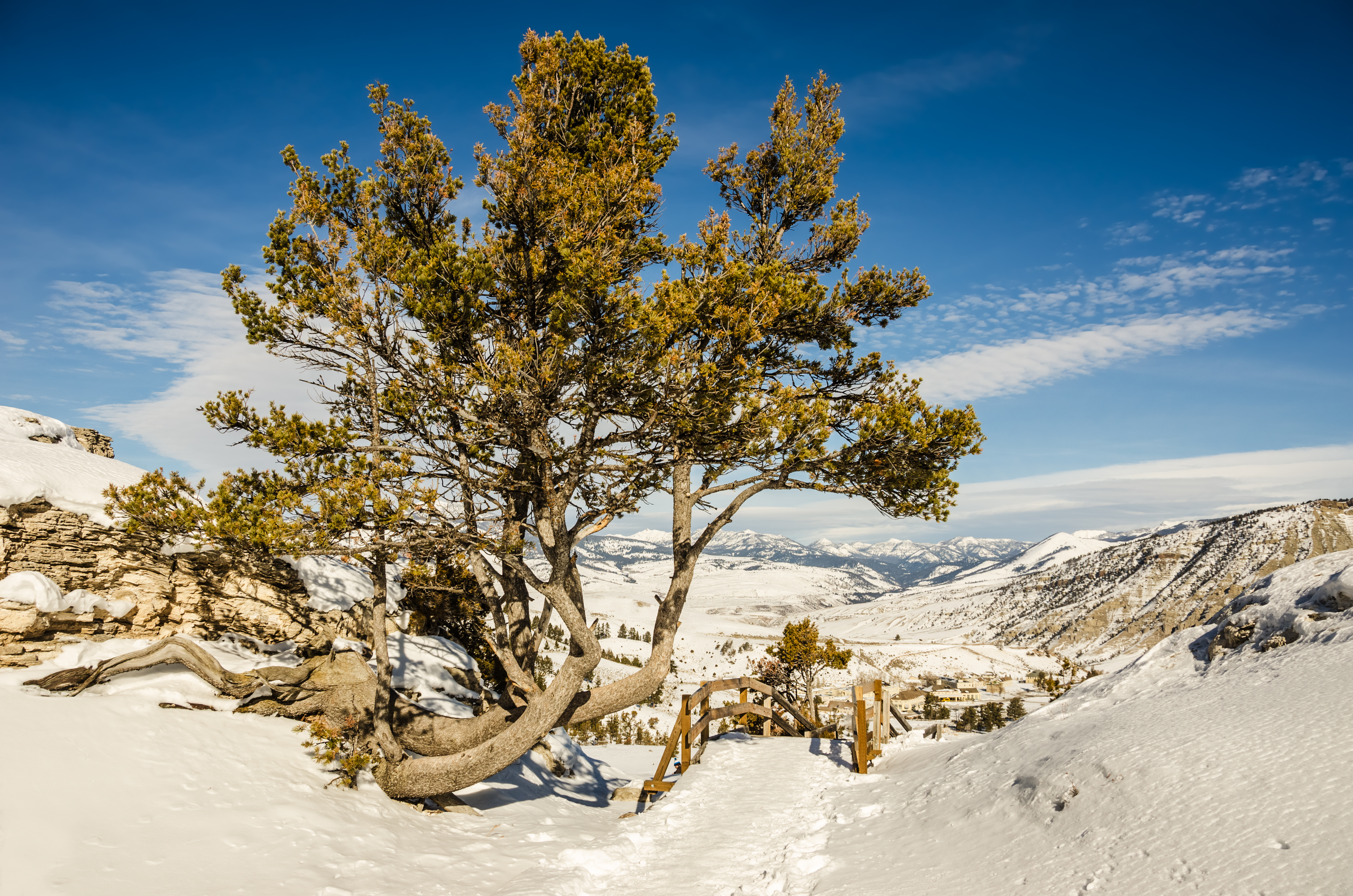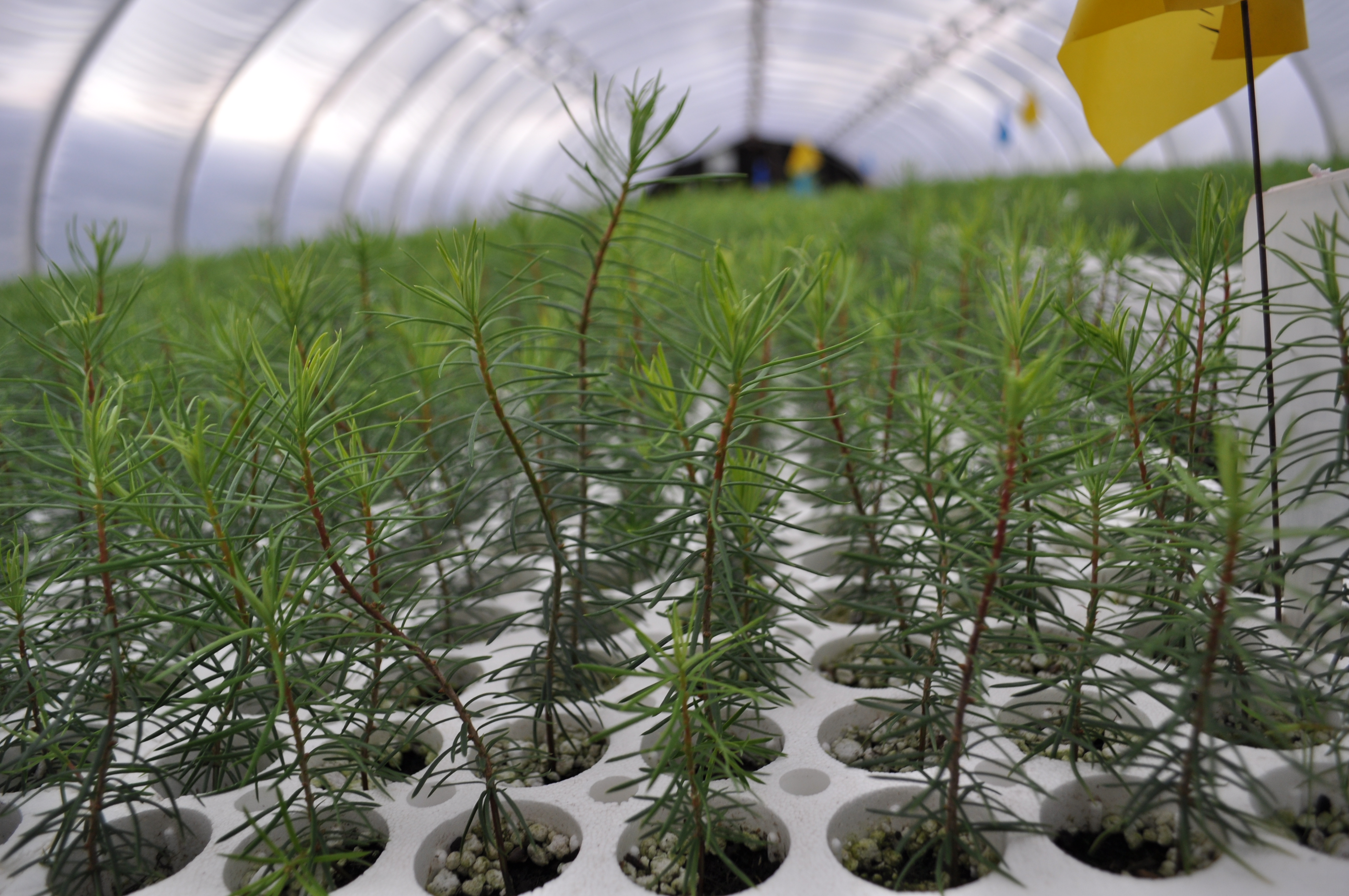AT THE FOREST SERVICE NURSERY in Coeur d’Alene, Idaho, U.S. Forest Service geneticist Mary Frances Mahalovich subjects hundreds of whitebark pine seedlings to spores of blister rust, an invasive fungus that has weakened or killed many whitebark pines throughout the American West. But Mahalovich is betting that most of these seedlings will survive, just as similar seedlings have in previous rounds of testing.
Her confidence comes from knowing that the seedlings are from good stock. Fifteen years ago, she read studies showing that five to 20 percent of white pines exhibited resistance to blister rust and thought there was a chance that similar resistance lurked in whitebark pine since the two pines are closely related. So she started hunting for the trees that would spawn a new generation of whitebark pine. Wandering through the high-elevation forests of Montana and Idaho, she found matriarchal whitebark pines that seemed to have survived the choking tendrils of blister rust. Their seeds were painstakingly gathered and planted at the Forest Nursery. Those that survived the rustresistance test would be sent out to repopulate dwindling whitebark pine stands. A chosen few have been protected in Forest Service seed orchards to become the parents of a new line of disease-resistant trees. “Mary was really kind of the mastermind behind a lot of this,” says Jodie Canfield, wildlife program director at Gallatin National Forest. “There were 15 areas where she found trees that were in a rust environment that exhibited some sort of tolerance. Those we called ‘plus-trees.’”
The Forest Service still protects and harvests seeds from most of the 181 plus-trees, the pioneers of the next cohort of whitebark pine that may have one fewer threat to battle. “A few years ago, it was painted as this disaster story, like it’s the end of whitebark pine, it’s toast,” Canfield says. “But what we’re finding through our statistical monitoring is that it’s not as badas some would say.” But blister rust isn’t the only threat. As mountain pine beetles, species competition and climate change add to the whitebark’s burden, can the next generation mature fast enough to preserve the species? One of the ways the Forest Service is accelerating the evolutionary process is by selecting traits without waiting for nature to do it. Similar to testing for rust resistance, Mahalovich is sampling her 1,300 seedlings to see which ones can stand colder temperatures. Then, because scientists have found that drought tolerance is correlated with certain chemical or isotope ratios in each individual tree, she’s analyzing each seedling’s isotope profile, so she can pre-select which of her seedlings might have that trait also. The best tree for the future would be a rust-resistant tree that could better tolerate drought and the cold of the highest mountaintops, where beetles are less likely to attack.
2012 saw the first planting of seedlings that might be able to fend off blister rust. Since then, the Forest Service has planted more than 81,000 rust-resistant seedlings in burned areas of the Greater Yellowstone Ecosystem, thanks in part to matching donations from American Forests. Forest Service researchers have discovered much about whitebark pine in just 15 years. But obviously, there’s still more to learn. Canfield says the hard part is keeping the continuity of such a long-term project, but Mahalovich, at least, says she’s sticking around until at least 2020 when she hopes to have processed all the data on her current studies.
Laura Lundquist is a Bozeman native and a graduate of the University of Montana School of Journalism who writes for the Bozeman Chronicle. This article is an excerpt from “Accelerating Adaptation,” originally published on American Forests’ website. Read the full article at americanforests.org/AcceleratingAdaptation.

